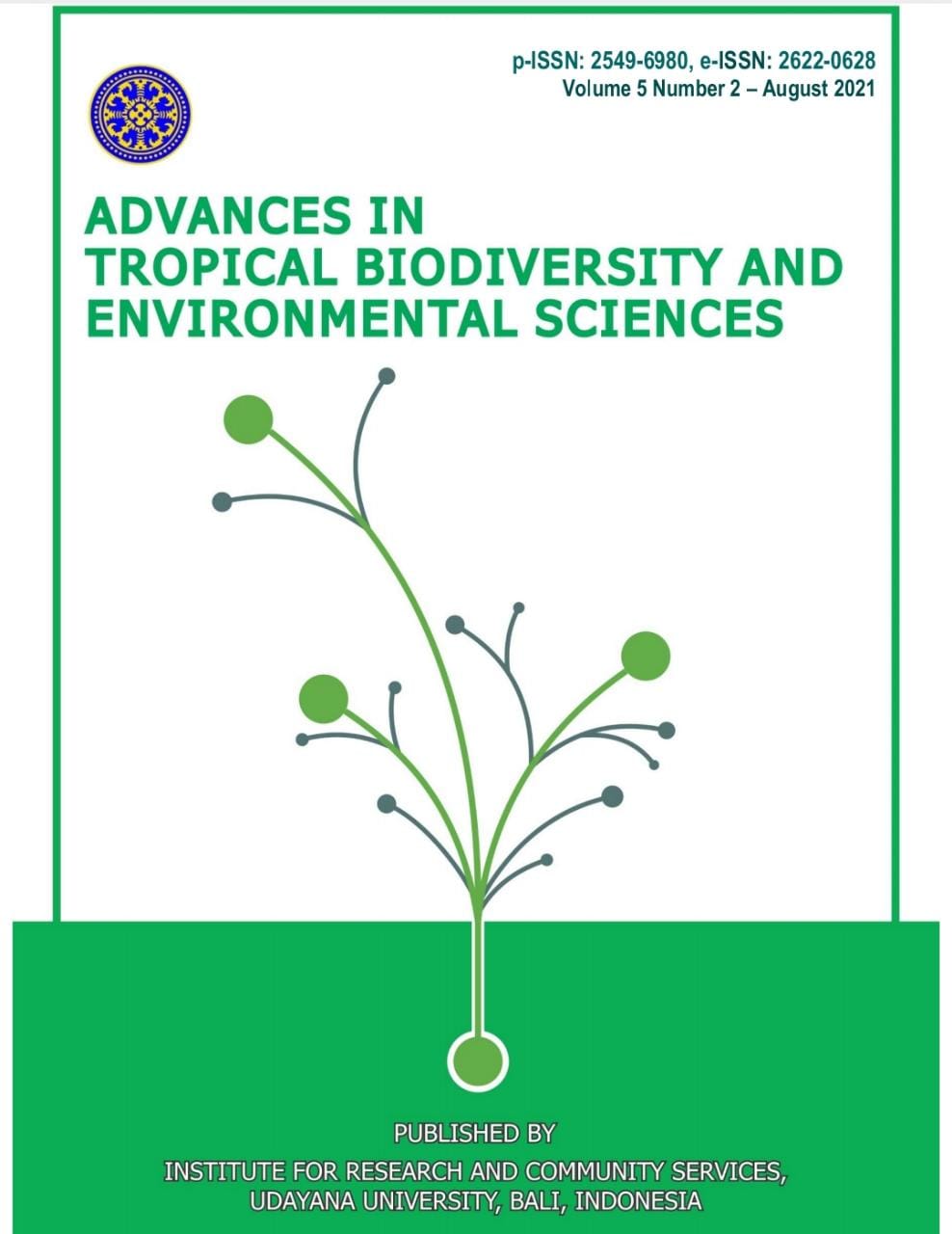Effect of Giving Different Doses of Vitamin E in Feed to the Level of Gonad Maturity of Tilapia (Oreochromis niloticus)
Abstract
One of the nutrients that can be given to brood feed fish to improve reproductive performance and egg quality is vitamin E. Vitamin E has a very important role in increasing fish reproduction because vitamin E functions as an antioxidant that can maintain the presence of fatty acids and prevent fat oxidation in the fish cell membrane and can accelerate the secretion of reproductive hormones. This study aims to determine the effect of vitamin E in feed at different doses on the level of gonad maturity of tilapia. The research was conducted at the Fisheries Laboratory of the Faculty of Marine and Fisheries, Udayana University from July to August 2020. The samples of fish tested were tilapia (Oreochromis niloticus) obtained from the Teratai fishing pond, Sanur Bali. Vitamin E used was Ovagrow Vit E with a vitamin E content of 50%. The CRD method (completely randomized design) was used with four treatments and three replications. The doses of vitamin E that were mixed into the feed were 0, 100, 300, and 500 mg/kg of feed. The results showed that the administration of vitamin E mixed in the feed at different doses had a significant effect on the achievement of gonad maturity level, gonad somatic index (GSI), and Fecundity (P <0.05). Provision of vitamin E at a dose of 300 mg/kg of feed was the best dose for ripening tilapia gonads. The gonad maturity level developed up to maturity stage IV, the GSI value was (3.56 ± 0.46) and the fecundity value was (1379 ± 289).
Downloads
References
[2] Arfah, H., Melati & M. Setiawati. 2013. Vitamin E supplementation with different doses at feed on the reproductive performance of the female brood fish comet (Carassius auratus auratus). J. Aquaculture Indonesia. 12: 14-18.
[3] Effendie, Ichsan. 1997. Fisheries Biology. Bogor. Yayasan Pustaka Nusantama
[4] Gammanpila, M., Yakupitiyage, A., and Bart, AN 2007. Evaluation of the effects of dietary vitamin C, E, and zinc supplementation on reproductive performance of nile tilapia (Oreochromis niloticus). Aqua. Science, 12: 39-60.
[5] Hamre, K. (2011). Metabolism, interactions, requirements and functions of vitamin E in fish. Aquaculture Nutrition, 17, 98-115.
[6] Sunarno., And Muhammad, F. 2004. Improvement Reproductive Quality of Tilapia (Oreochromis niloticus) through the addition of Vitamin E (α - Tocopherol) in Feed Formulations. Semarang: UNDIP.
[7] Wardani, Y., N. Mote and SL Merly. 2017. Aspects Reproduction of Tilapia (Oreochromis niloticus) in Rawa Biru, Sota District, Merauke Regency. Journal Fisherina, 1 (1): 1-10.
[8] Hunt, AO, Ozkan, F., and Altun, T. 2004. Effect of broodstock nutrition on reproductive performance of fish. Turkish Journal of Aquatic Life, 2 (3): 487-493.
[9] Tang, MU & Affandi, R. 2004. Biology of reproduction fish. Research Center for Coastal and Aquatic Areas. Pekanbaru: Riau University, 110 p.
[10] Tang, MU and Affandi, R. 2000. Biology of reproduction fish. Bogor: Center for research and supervision waters. 110 p.
[11] Andri. 2006. Development of Fish Female Gonads Zebra Danio (Brachydanio rerio) who are given Feed with Various Doses of Vitamin E. Bogor: IPB.
[12] Aryani, N., Efawani & A. Nur. 2014. Enrichment of artificial feed with vitamin E for gonadal maturation of mali fish (Labeobabarbus festivus). J. Fisheries and aquatic. 2: 126-129.
[13] Halver, JE 2002. The vitamins. In Halver, JE and Hardy, RW (Eds.). Fish Nutrition. 3rd Edition. San Diego CA, USA: Academic Press, p. 61-141.
[14] Khairuman and Khairul Amri. 2005. Fish Farming Indigo Intensively (Fourth Printing). Jakarta South: PT Agromedia Pustaka.
[15] Kordi, K.M.G.H. 2010. Complete guide keeps freshwater fish in a tarpaulin pond. Yogyakarta. Lily Publisher.













